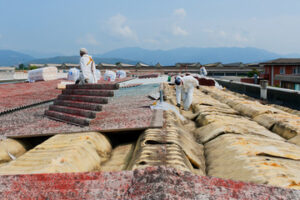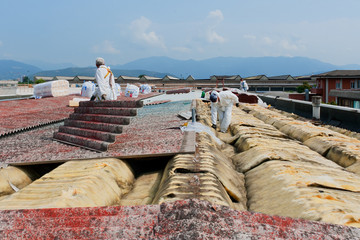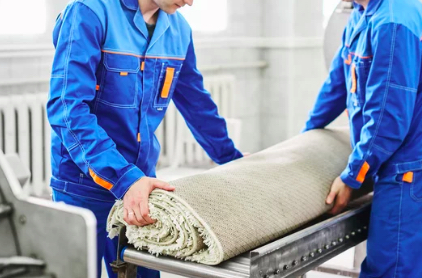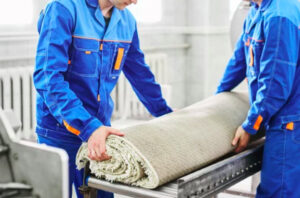Whether for commercial or residential purposes, asbestos should only be handled, sampled, removed, or repaired by certified professionals. This is because exposure puts people at risk of developing incurable diseases such as mesothelioma and lung cancer.
If you think you have asbestos materials in your home, consult with your county or state’s environmental quality department. They can help you determine if they need to be replaced or diminished. Visit Website to learn more.

While asbestos use has fallen dramatically thanks to product bans and other regulations, it can still be present in countless building products. If this is the case in your home, you must always use caution when dealing with it. This is why professionals should handle asbestos abatement. If not, you risk inhaling dangerous asbestos fibers that can cause lung cancer and mesothelioma.
Before the contractors begin working, they should shut off your HVAC system and install a decontamination enclosure around the work area. They may also wet down the materials in question, as this can reduce airborne fibers. In addition, they should put on gloves and cover their noses and mouths. They should also avoid disturbing the material as much as possible to minimize the release of fibers. They should also avoid running the heating or cooling system if the material is believed to contain asbestos.
Once the professionals have established a safe work environment, they should take material samples. This will help them determine whether the asbestos needs to be removed and how much is present. Asbestos can be difficult to recognize, so you need to have the materials tested by a lab. The samples should be taken from the areas that are to be treated or are likely to be disturbed, such as insulation and pipe coverings.
Depending on the type of material, the contractors may need to wet the fibers down with water or another solvent before removing them. This can prevent the asbestos from breaking into smaller pieces that can then float in the air. In addition, the contractor should use a HEPA vacuum to remove the particles from the surface of the floor and walls of the room.
Once the asbestos has been disposed of, the professionals should place it in durable, airtight containers. These should be clearly labeled and stored in a secure dumpster or other receptacle until it is taken to a landfill. The professionals should also wear protective clothing and equipment when handling the material, such as goggles, face masks, and gowns.
Asbestos is a fibrous mineral that’s been linked to a variety of health problems, including lung cancer, asbestosis, and mesothelioma. This dangerous material is found in various common building materials such as textured paint, floor and ceiling tiles, shingles, and insulation. Unfortunately, asbestos still resides in many homes and buildings today.
When undergoing an asbestos abatement, preparing the work area is one of the most important steps. This will ensure that the removal process is done properly and without risking the health of those working on it. The work area should be isolated from the rest of the home or building using plastic sheeting, negative air pressure units, and warning signs. In addition, personal protective equipment should be worn, such as face masks and gowns.
Before beginning any work, a written asbestos removal control plan should be created. This will outline the specific methods and processes used to remove the asbestos. A copy of this plan should be available for anyone who works on the project. You can find asbestos removal control plans online or in a variety of books and guides that are available at local libraries or bookstores.
It’s also important to determine if the material is friable or non-friable. Brittle material can easily release microscopic fibers into the air, while non-friable material cannot. If the material is brittle, a professional should be called in to handle it.
If the material is not brittle, you should be able to tell by its appearance whether or not it contains asbestos. However, even if the material appears to be in good condition, you should still have it tested by a professional before you attempt any renovation work. This will prevent unintentional disturbance and possible airborne exposure to asbestos fibers.
If you do decide to have the materials in your home tested for asbestos, you should only hire a licensed and certified inspector. This will ensure that the inspection and removal are carried out properly and according to state and federal regulations. Suppose you suspect a professional has not followed the proper procedures for handling and disposing of asbestos. In that case, you can report them to the Environmental Protection Agency and Occupational Safety and Health Administration, as well as to your county and state departments of environmental quality.
A common abatement technique is encapsulation, which involves sealing hazardous materials so that they can’t release dangerous fibers into the air. It’s important to hire a certified professional for this job, as it requires extensive knowledge of asbestos and how it reacts to different environments. In addition, it requires specialized equipment to do it correctly.
Before asbestos abatement can begin, the service provider must set up a containment area. This will include sealing the air ducts, turning off the HVAC system, and plasticizing walls, floors, ceilings, and other necessary areas to create an isolated work zone. This protects the environment outside of the affected area from contamination by dust and other harmful substances.
Once the work area is sealed off, professionals will remove and replace any asbestos-containing material. They will wet all materials before removal, including asbestos-containing thermal insulation (ACM), pipe lagging, and floor tiles. The extra moisture helps to prevent the material from crumbling and releasing toxic asbestos fibers. The material will be placed in durable, odorless disposal bags and carefully sealed to avoid contamination from traveling to other areas. Once the ACM is removed, it will be disposed of in an EPA-approved landfill or facility.
During this process, the professional will wear gloves and a respirator to protect themselves from the deadly mineral. They will also use a high-efficiency particulate air (HEPA) vacuum to minimize the release of asbestos particles. HEPA vacuums are designed with a special filtration system to ensure that the harmful minerals do not escape the contained work area and travel to other areas of your building.
When the work is finished, the HEPA vacuum will be used to clean the work area and decontaminate any used equipment or clothing worn by workers. Then, the area will be re-inspected using a microscope to confirm that all the asbestos is gone.
It’s important to hire a certified abatement contractor, as it can be dangerous to work without proper training. You’ll want to ensure the professionals you hire have a Department of Labor and Workplace Development (DOLWD) supervisor or worker permit, as well as an Environmental Protection Agency (EPA) contractor identification number.
Asbestos is a deadly carcinogen that must be treated with the utmost care. This is why only licensed asbestos abatement professionals should handle it. However, some unlicensed companies may claim that all materials in your home contain asbestos and recommend unnecessary removal. In addition, some of these companies may charge excessive fees.
A licensed asbestos removal company will take the proper steps to ensure your home is free of harmful materials before beginning work. This includes shutting off your HVAC system so that dirty air does not circulate throughout the building. Additionally, the professionals will physically close off areas that need to be worked on using tarps and heavy-duty adhesives.
Once your home has been cleared, the asbestos will be double-bagged and sealed in a special container for transport to an approved landfill. The container must be locked to prevent the contents from being exposed to contaminants on the road.
In addition to the double bagging, the waste will be wetted to reduce the risk of fibers escaping if the container is damaged during transport. Wet asbestos waste also weighs less, making it easier to transport. For bulk waste that cannot be double-bagged, it will be wetted and wrapped in a leak-proof material before being sealed and transported to the disposal site.
Once the asbestos has been safely transported to a disposal site, it will be buried in a designated area. Asbestos waste is a dangerous contaminant, which means it must be kept separate from other waste to minimize the risk of it leaching into waterways and causing environmental problems.
Some research is currently being conducted to find ways to recycle asbestos. The goal is to turn the toxic fibers into a nonhazardous product that can be reused. One possibility is to put the waste through a process similar to how metals are recycled. The resulting nonhazardous metal or glass ceramic can be used for various purposes, including insulation. This will help to offset the cost of disposal while protecting landfill workers from exposure and preventing future asbestos-related health issues.



 Commercial carpet cleaning is necessary to keep a business’s interior looking good and maintain its value. Regular cleaning also helps improve indoor air quality by reducing allergens like dust mites, pet dander, and bacteria. While vacuuming daily can help remove much of the dirt and debris that builds up, it is often necessary to hire professional carpet cleaners for a deeper clean. When choosing a carpet cleaning company, look for one that offers pre-vacuuming as part of their services.
Commercial carpet cleaning is necessary to keep a business’s interior looking good and maintain its value. Regular cleaning also helps improve indoor air quality by reducing allergens like dust mites, pet dander, and bacteria. While vacuuming daily can help remove much of the dirt and debris that builds up, it is often necessary to hire professional carpet cleaners for a deeper clean. When choosing a carpet cleaning company, look for one that offers pre-vacuuming as part of their services.